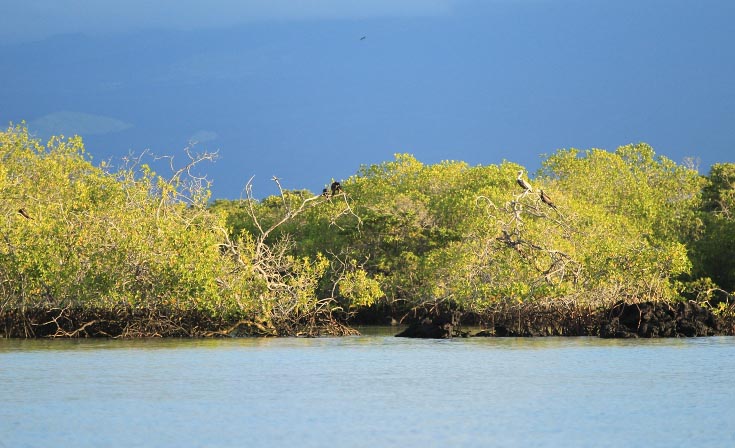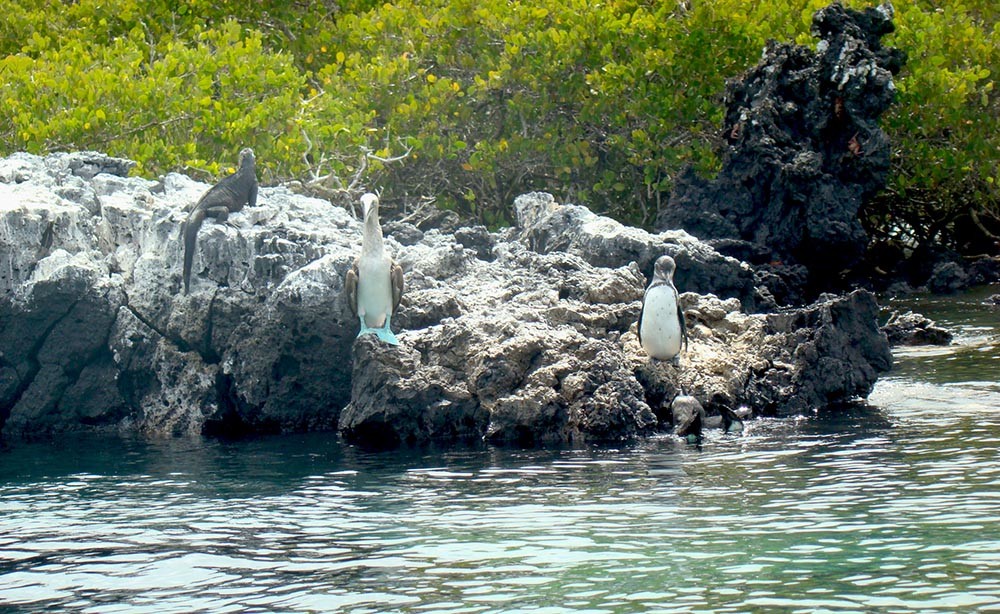
The Importance of Mangroves
Today is World Wetlands Day, a day dedicated to raising awareness of wetlands across the world, and to highlight how important these natural habitats are for keeping a healthy natural world.
Bogs, swamps, flood plain forests, marshes and mangroves are all wetlands, as they are large, low-lying areas inundated with water for long periods of time. Coastal, marine and inland wetlands are essential for over 1 billion people across the world to earn a living, yet they are declining fast; 40% of wetlands have been degraded in over 40 years according to the Wetland Extent Trend, and this decline is continuing at a 1.5% annually.
The Galapagos Islands are home to a large selection of wetlands, providing unique habitats for many animal and plant species. The majority of the wetlands of the Galapagos are coastal mangroves and marine lagoons, which are made up mostly of mangroves and swamps formed of a combination of seepage of freshwater and seawater from underground tributaries, essential for the maintenance of biological diversity in Galapagos.

© Robert Fuller
On the island of Isabela, the area of wetlands called Los Humedales is a collection of trails over an area of 6km. The wetlands of Isabela are the most extensive in the Archipelago, contributing significantly to the biodiversity as they are home to several endemic and native species that depend exclusively on the wetlands in order to fulfil their life cycle, such as the Galapagos violin crab.
Mangrove Habitats
Mangrove swamps consist of a variety of salt-tolerant trees and shrubs that thrive in shallow and muddy saltwater. A high concentration of nutrients and plankton flows in and out of the lagoons with the tides, making mangrove forests important breeding and nursery grounds for juvenile sharks, green turtles, penguins, flamingos, turtles, rays, seabirds, fishes and invertebrates. Mangroves also provide protection from the waves, strong currents and larger predators.
Mangroves are an important feeding area for the endemic Galapagos penguin in Puerto Villamil, Isabela. These penguins are critically endangered, rely highly on the mangrove and are highly susceptible to alterations to the marine ecosystem. Puerto Villamil is the only tropical town on the planet to contain penguins.

The Mangrove finch, one of Darwin’s Finches, is endemic to the Galapagos Islands, and is currently listed as critically endangered. With only approximately 100 adult birds left, they are the rarest bird in Galapagos. Their range is now restricted to the mangroves of Playa Tortuga Negra and Caleta Black on the north-west coast of Isabela. A land bird has not gone extinct in Galapagos since the time of Charles Darwin, so it is vital that the mangrove habitats that they depend on are preserved.
Mangrove Conservation
Before the 1950s settlers in Galapagos cut down mangrove trees for the construction of houses and boats. Subsequently, areas of mangrove were cleared to make space for urban developments and to create a more leisurely coastline to attract tourists.
In September 2001, the government of Ecuador included all wetlands in south Isabela as a RAMSAR site of international importance, in which the government commits to the conservation of these wetlands.
The Directorate of the Galapagos National Park regulates the use of wood resources through its program of monitoring and recording of exploitation and mobilization of wood resources.

